NNormal Kjerag Review - shoes of Kilian Jornet. High performance tests from Mountain Race Team
This review of NNormal sneakers, the flagship Kjerag model for trail running, could have been released earlier if not for a series of logistical obstacles. But better late than never. Although it's obvious that their creator, the iconic figure Kilian Jornet, definitely has no intention of removing his "golden eggs" from the lineup, which is the foundation of his personal brand created after leaving Salomon. Therefore, this review, created after quite extensive testing, will remain relevant for at least several more seasons. At least, I really hope so.
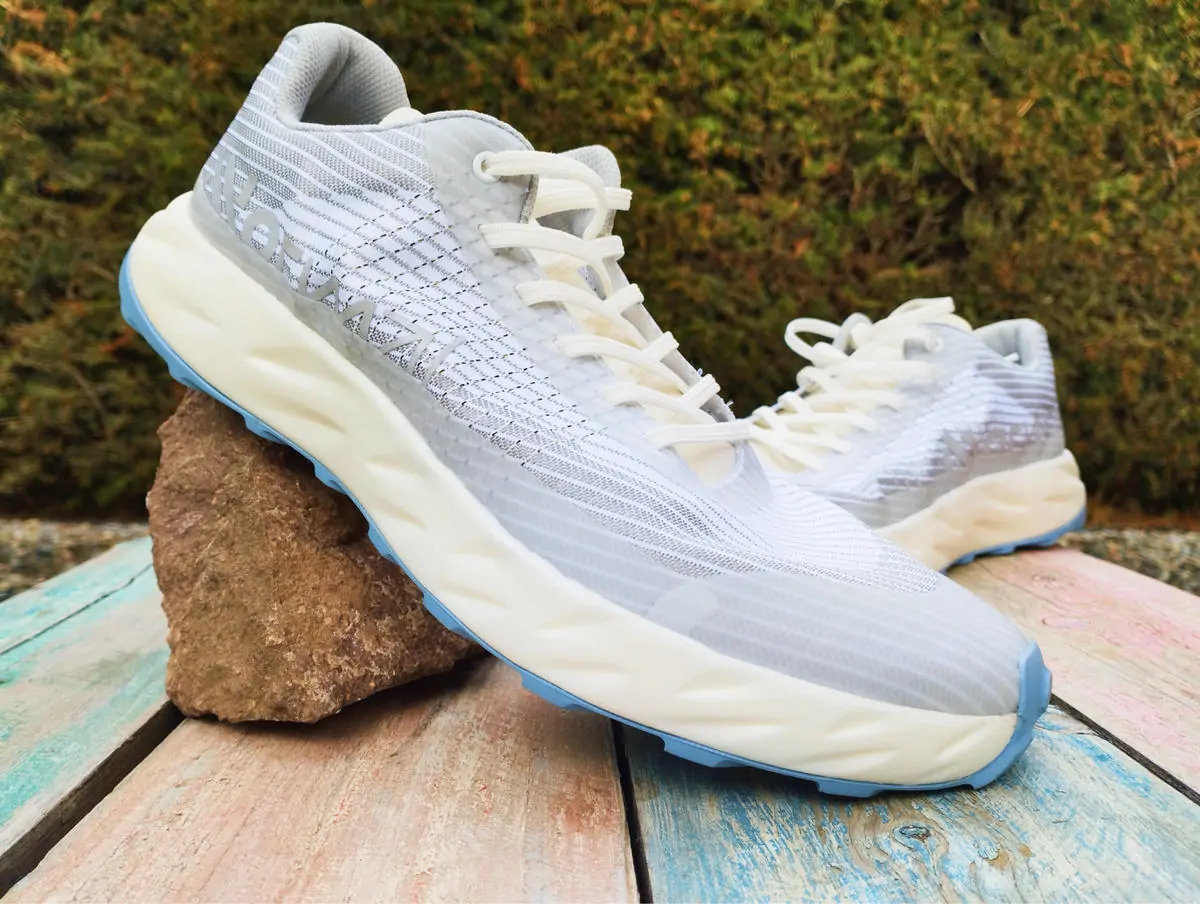
NNormal Kjerag (с) Mountain Race Review
Something personal.
Like many others, it was Kilian Jornet who introduced me to mountain running back in 2011, inspiring me with his record ascent of Kilimanjaro. I have met him several times at various races in Tromsø and Chamonix, but I must say that I do not have a cult of worship towards him. I am quite aware of his role in the history of mountain sports, his complex nature, and views, many of which I share. Considering my many years of work with Salomon from 2013 to 2022, including as a regional brand ambassador, this review of NNormal Kjerag and my attitude towards the NNormal brand is of great interest.

2014 - the pilot of Tromsø Skyrace
Partly because my main question after the release of the NNormal Kjerag sneakers is whether Kilian was able to transfer his developments from Salomon to NNormal right from the first model and implement his ideas. Could he surpass the army of developers at Ansy and create top-tier running shoes of the highest class, on par with the S/Lab models, especially the S/Lab Pulsar that helped him set a record at the Sierre-Zinal race? And if he couldn't, then what was all this for? Obviously, the factory Camper, where NNormal is produced, faced an extremely challenging and ambitious task, and it is from this point that one should start creating a review and impressions of the new product.
For what and whom. For what level of preparation
The NNormal Kjerag model is positioned by the brand as versatile competitive running footwear for a wide range of tasks — from skyrunning to mid-length and medium-length ultra-trails. Kilian himself won UTMB and Hardrock in them — hundred-milers with 10,000m+ elevation gain, but we certainly do not aim to match his level of preparation. Of course, you can train in them, and it is most productive to run fast, developing workouts in them on flat terrain and hone skills on moderately challenging mountain terrain.
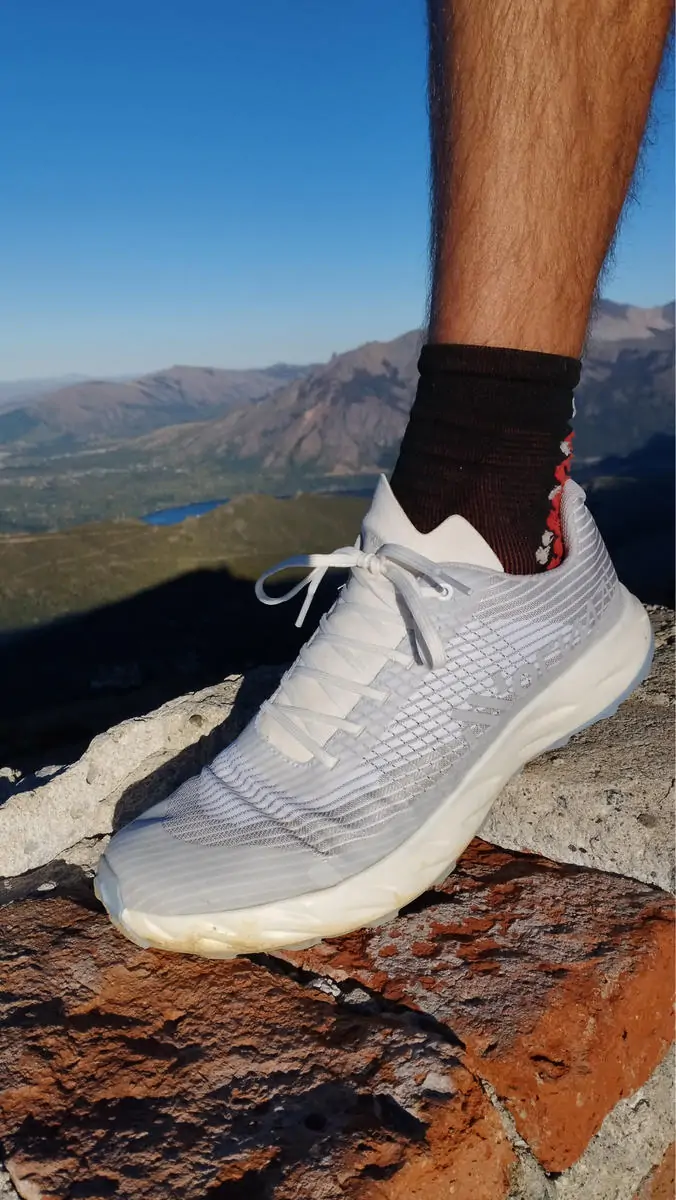 |
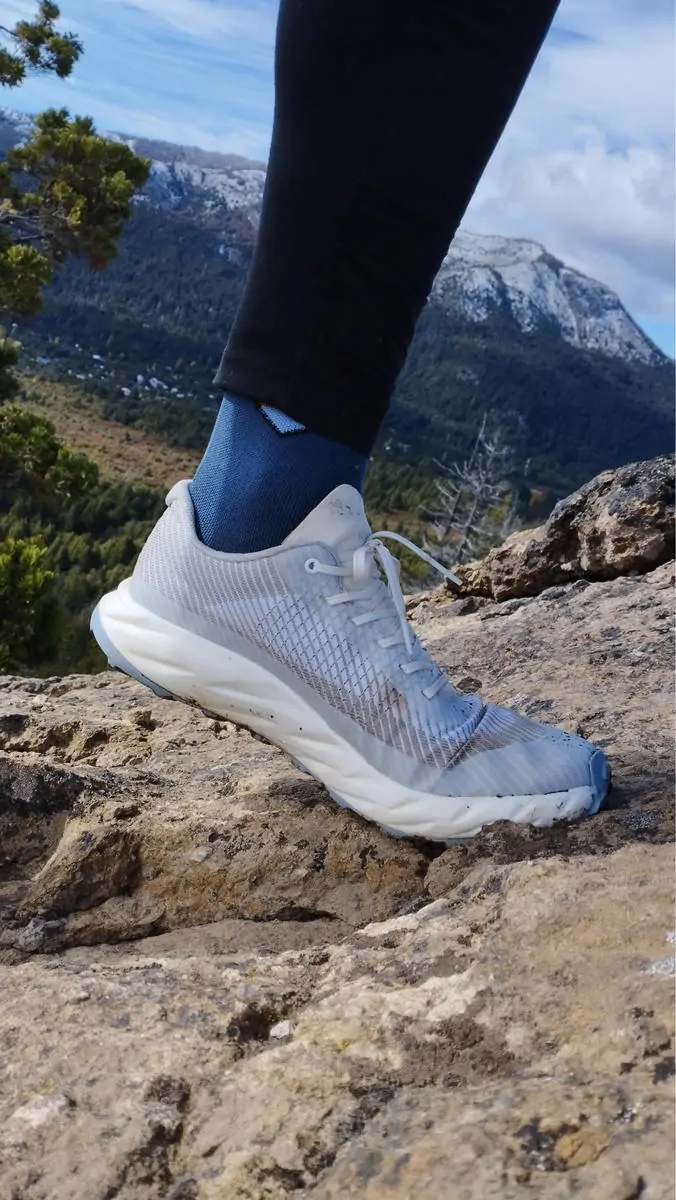 |
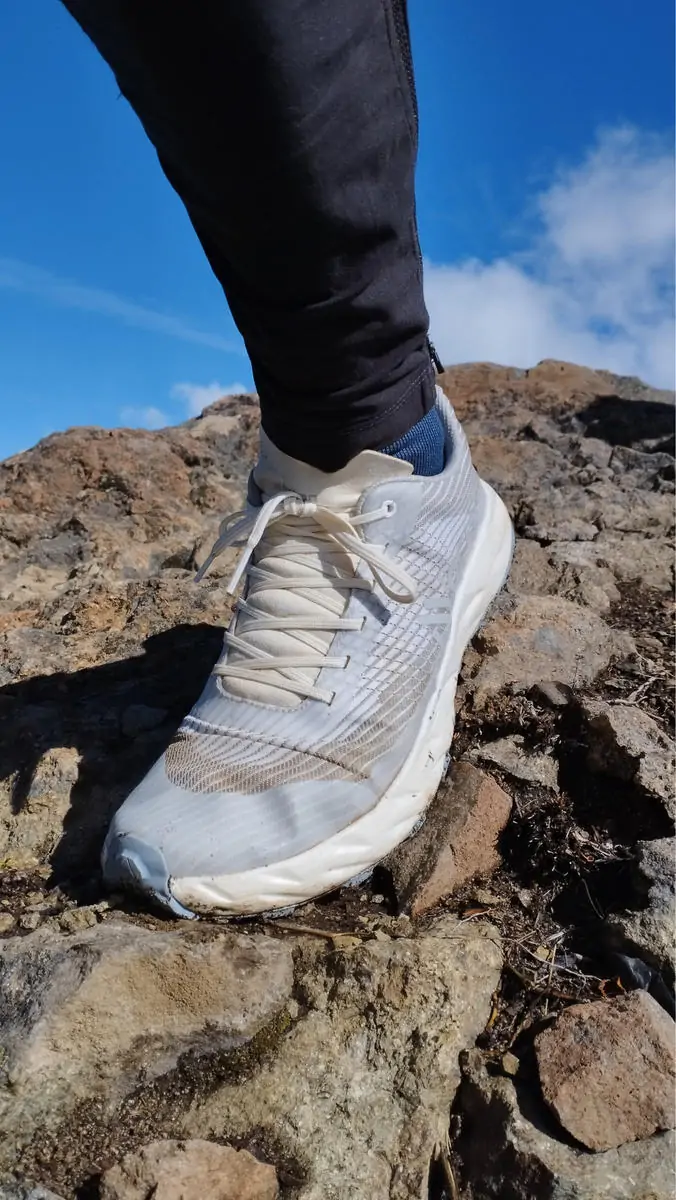 |
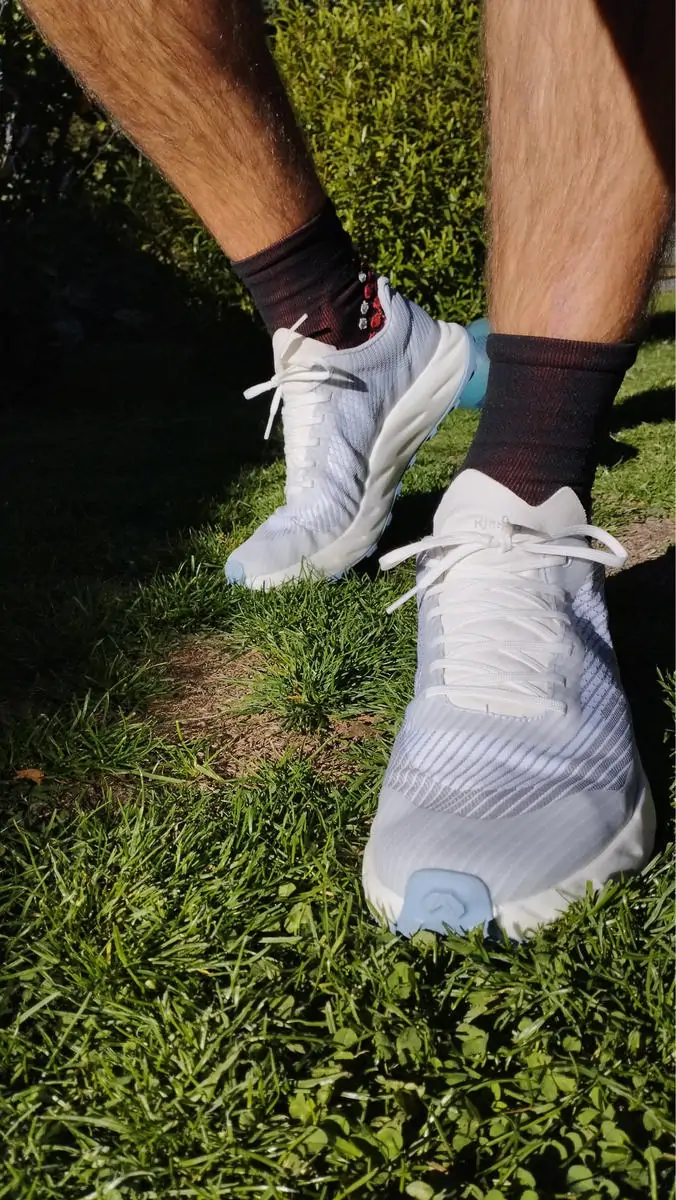 |
Given the intended purpose, NNormal developers expect that the Kjerag model will be used by runners with average, above-average (advanced enthusiasts), and high (professional athletes) levels of preparation. For beginner runners, the sole configuration will be very specific, and NNormal recommends looking at the Tomir model.
Performance overview
What tasks do manufacturers of top trail shoes face? Let me write you my personal checklist, which I use to test shoes during training and competitions. These are my evaluation criteria, not technical parameters, specifically the sensations achieved after a month of regular testing in various conditions. They will also vary in requirements if I am testing simpler models or ultra-trail shoes.
Weight distribution, balance between the upper and the sole.
Top racing shoes should have perfect balance, where there is no feeling that the sole feels like a clumsy iron or the upper overly rigid. In my opinion, the NNormal Kjerag has one of the best weight distributions on the market, weighing 200-220 grams per shoe in an average size. Obviously, a huge amount of work has been done to find a balance between the Matrix upper and the midsole, which is not low-profile (23.5 mm / 17.5 mm). A weight of 200-220 grams for the most popular sizes makes the Kjerag one of the lightest among all trail models. However, weight alone is not always criterion number one. There are truly good racing shoes weighing 250g+, but knowing Kilian's passion for weight optimization, it is evident that a lot of work has been done.

Sole Performance.
Obviously, Kilian is not following the trend of integrating a carbon plate into the midsole (which I am very glad about). However, to create true racing shoes for high speeds even on ultra-distances without reducing the sole profile, as seen in older models like S/Lab Sense or low-profile Inov-8s, it was necessary to find a foam that would meet the demands of strong athletes. The EExpure foam from Fulgent Sun turned out to be the closest match to this need. When running fairly fast on trails on the forefoot and uphill, the Kjerag almost does not absorb energy, achieving the developers' goal well. When running heel-to-toe, the transition felt less comfortable with a 6mm drop. Additionally, this model has minimal rocker geometry in the sole, which doesn't contribute much to smoothness. Those who run with a heel strike might not notice this, but I have gotten used to running on my toes.

Energy conservation and cushioning balance
The main challenge for many models from various brands stems from the previous point—how to make comfortable shoes without sacrificing performance. Yes, you can grit your teeth and run in low-profile shoes without cushioning, but only a few athletes will go far in such shoes. The EExpure foam is balanced in terms of foam density, allowing you to run as fast as you're prepared for while providing sufficient cushioning on hard surfaces and especially on downhill sections. Interestingly, when running on asphalt or concrete, they feel quite soft in the heel area, which will help you finish any race on urban pavement without tears in the final kilometers.

Stability: stability on technical, challenging terrain
Obviously, the lower the profile of the shoes (sole thickness), the better they help navigate complex rocky terrain and sharp turns at high speeds. In the list of shoes for technical races and skyrunning, most footwear models will be low-profile. However, the Kjerag clearly aims to target this same category of running tasks, and during my tests, I had a big question about this model—would it be too bulky on the numerous turns of Patagonian trails since the shoes are not very thin (23.5/17.5mm) and have quite decent heel cushioning? The answer is no; the shoes exhibit good stability even when landing on the heel during sharp turns, and the foot doesn't collapse. Of course, this isn't the same level of stability as in very thin shoes or those with a rigid chassis in the heel, but again, credit is due for the selected foam composition. Moderate torsional stiffness and sole flexibility allow for excellent handling of complex terrain based on running skills; the surface is felt quite well, but they are not as uncompromising as the lowest-profile shoes.
Durability, especially the mesh in the shoes
One of the main complaints about many trail running shoes is that they tend to tear quite quickly. I have been running in Matryx shoes for several years now—S/Lab Pulsar and S/Lab Cross—and I have no reason to consider this material not durable. Matryx is indeed one of the most suitable options for the upper of trail shoes. I am confident that Kjerag is no exception. Yes, Matryx is denser and may feel a bit warm in the summer for some people, but water drains out quickly from the shoes, and they don't get significantly heavier when wet. It is more likely that the foam will wear out rather than the upper, unless subjected to mechanical cuts.
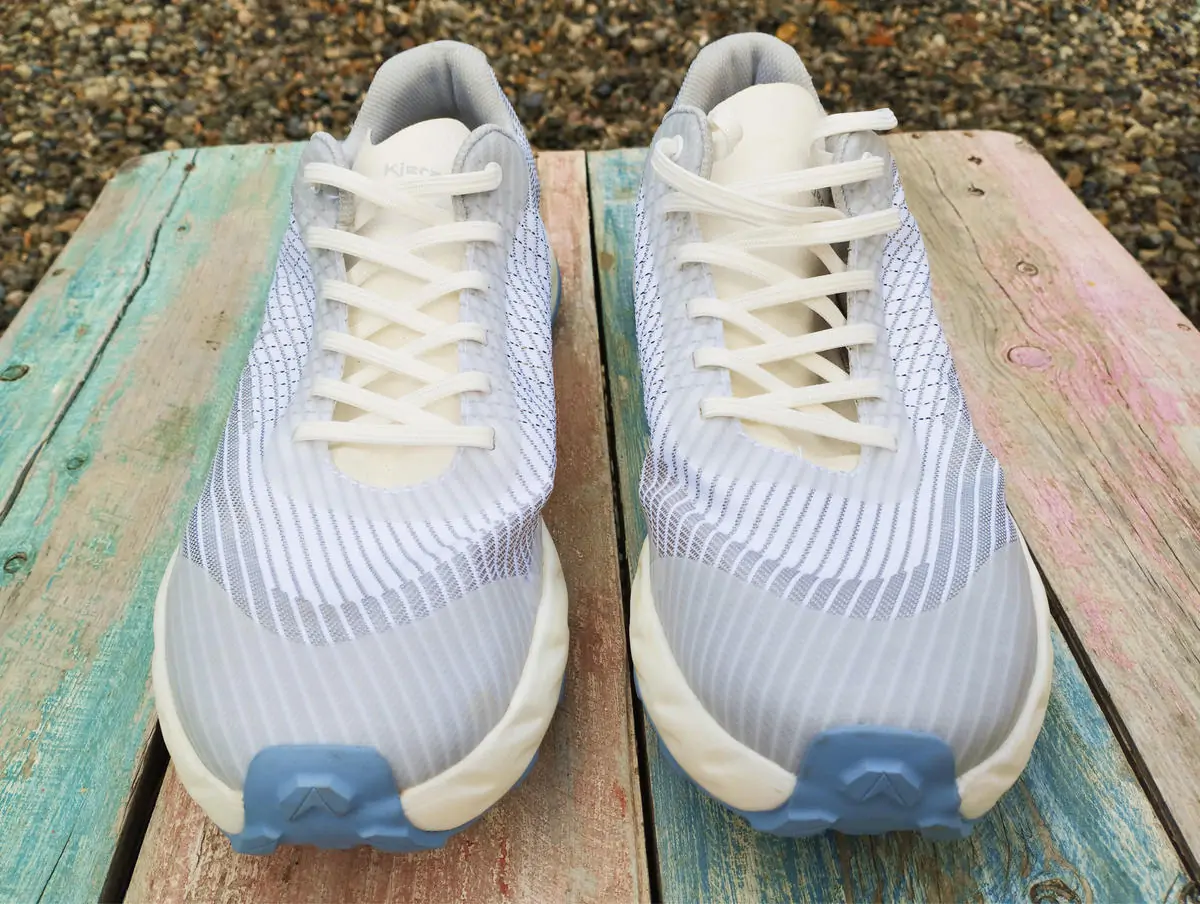
Fit density and foot lockdown
Racing shoes should be an extension of the athlete's foot, fitting snugly and precisely. The Normal Kjerag shoes have a very tight foot wrap with adjustment through classic lacing, and a fairly narrow and long last—there is quite a bit of room in the front part of my size. Perhaps such a tight fit might be unfamiliar and not entirely comfortable for most ultra-runners on extremely long distances. The shoes are positioned for races from 0 to 60 km +/-, and this seems true not only because of the not-so-soft ultra midsole but also due to the upper, as many ultrarunners crave softness and comfort especially after 50 kilometers when the ultra really begins. However, highly prepared and experienced athletes may not notice this at all, and they can adjust the lacing as needed, finding the existing level of cushioning sufficient.
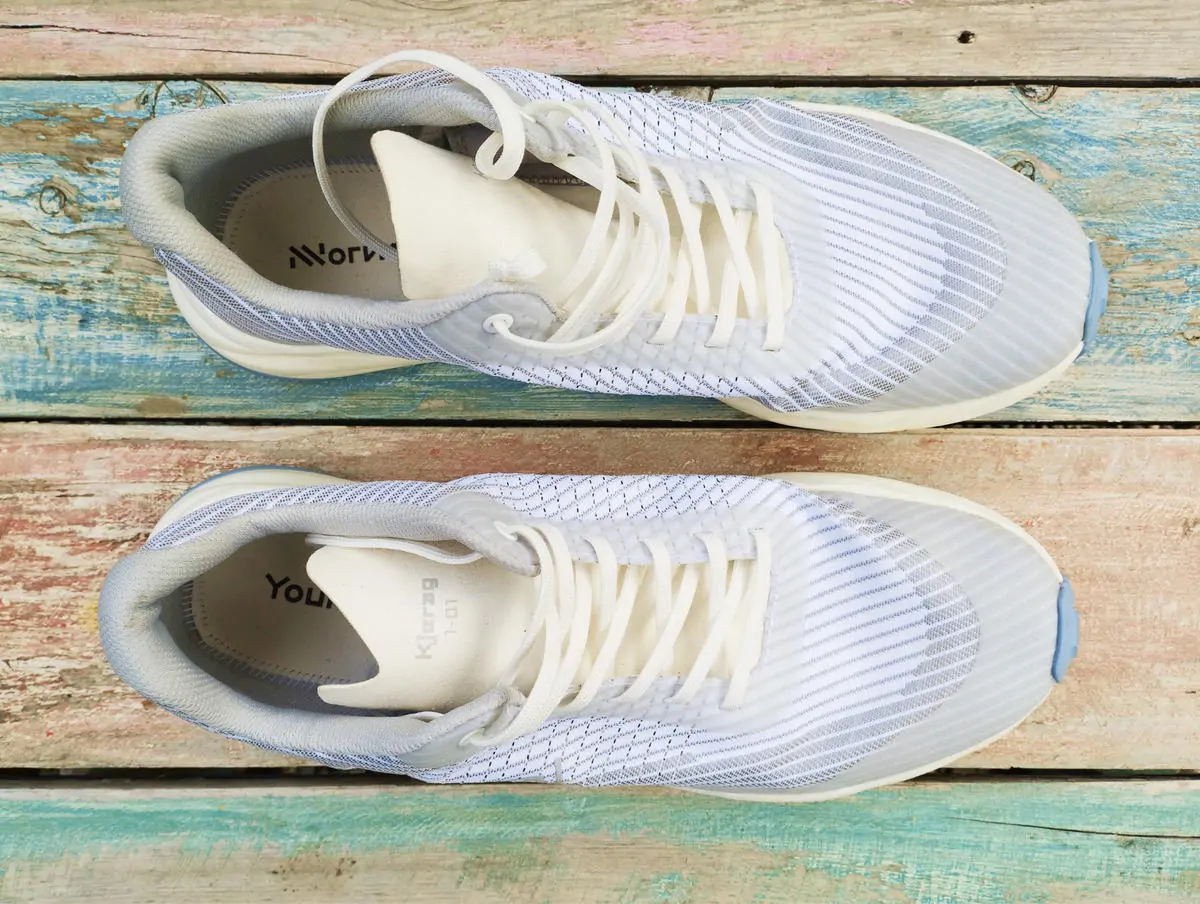
At the same time, there is one important observation, obtained through empirical long-term observations—these sneakers do not have an insole! And it is precisely without this insole that some may feel that the heel lockdown is insufficient even with a moderately tight and firm heel counter. In the Salomon S/Lab Pulsar and S/Lab Cross models, there is also no insole, and similarly, the lockdown in the rear part was lacking. Specifically in the Kjerag, this may have been done intentionally so that any user could insert their own insole, including orthopedic ones that are covered by health insurance policies in EU countries.
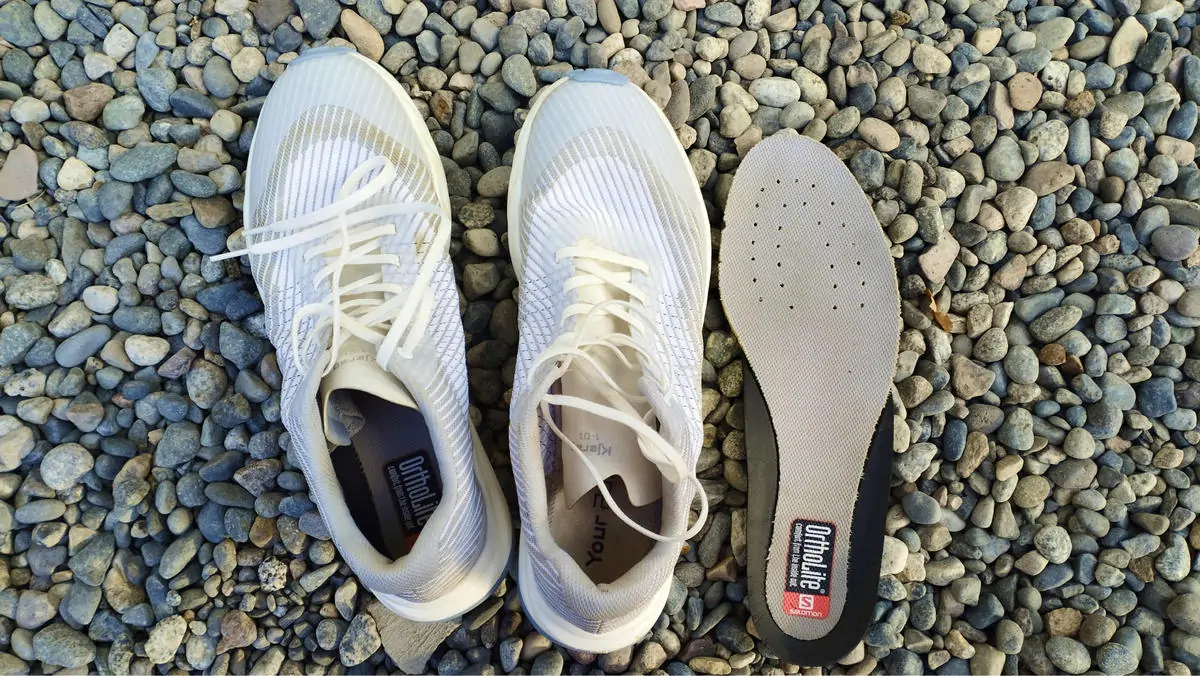
I inserted a regular Ortholite insole, and then the lockdown became excellent. Without an insole, it is likely necessary to take a shoe size one smaller than usual or wear a tighter sock. I tried different options, and a tight sock + insole seemed to be the best option for using this model, although it will also work fine with thin socks.
Grip on the surface.
It is important to remember that NNormal Kjerag are positioned as universal trail shoes, and universals are always either bad or not good enough in specific conditions. They are good for almost everything, but there is always a BUT. Kjerag has a universal tread pattern and Vibram Megagrip outsole size, consistent throughout the sole—3.5 mm. They are designed for most types of trail surfaces, except for liquid mud and ice.
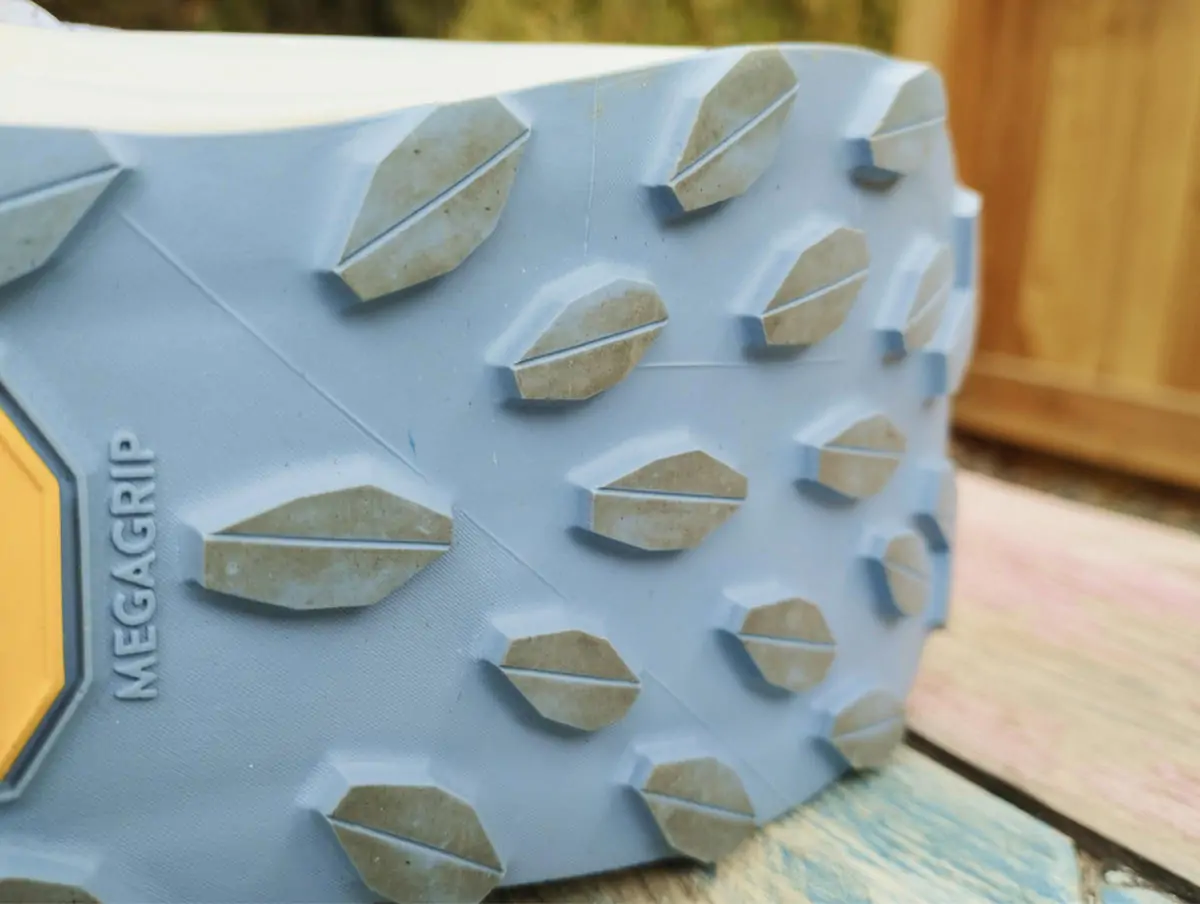
"Does dirt stick to the outsole?" Dirt can vary; the dirt available to me—no, dirt with lime admixture obviously will. Regular dirt, as understood by most people, doesn't really have much to stick to—the tread is quite low.
Based on my experience on loose, rocky, and volcanic surfaces, there are no issues; even on packed snow, the shoes grip well as much as possible. "But what about scree?" you might ask, and you would be right to wonder. Scree found in many races in the Urals, Northern regions—is a real nightmare for runners, especially when wet. Honestly, I don't have access to wet or dry scree, but the Vibram Litebase Megagrip rubber compound I saw on the outsole performed well on wet rocky surfaces. I am more inclined to believe that Kilian tested this product in wet Norway, where there is a lot of rocky surfaces and scree and would hardly release slippery sneakers for sale.
Nevertheless, it is obvious to me that the NNormal shoe collection lacks a model with an aggressive outsole and built-in gaiter, which would be a logical development of the assortment. I think it's only a matter of time.
Disadvantages
In addition to the numerous advantages, what drawbacks would I highlight as design features of the Kjerag?
- The specific narrow fit (even considering it's a racing model) may not suit everyone, but I seem to be lucky with my foot shape.
- The unusually large toe box space despite a snug fit and lateral support.
- There is no specific lace locking mechanism like a pocket or elastic. It's likely that Kilian was aiming to reduce weight.
- The lug height is not the most versatile; it seems like it lacks just 1-1.5 mm to improve grip on looser surfaces.
- The transition from heel strike while running isn't the most comfortable; there's a sense that this sole is designed for those who run on the midfoot and forefoot, although this isn't noticeable during descents.
- The specific sizing: without an insole, it might seem necessary to go 0.5-1 size smaller due to the narrow fit, or modify by adding a thin insole from another running shoe.
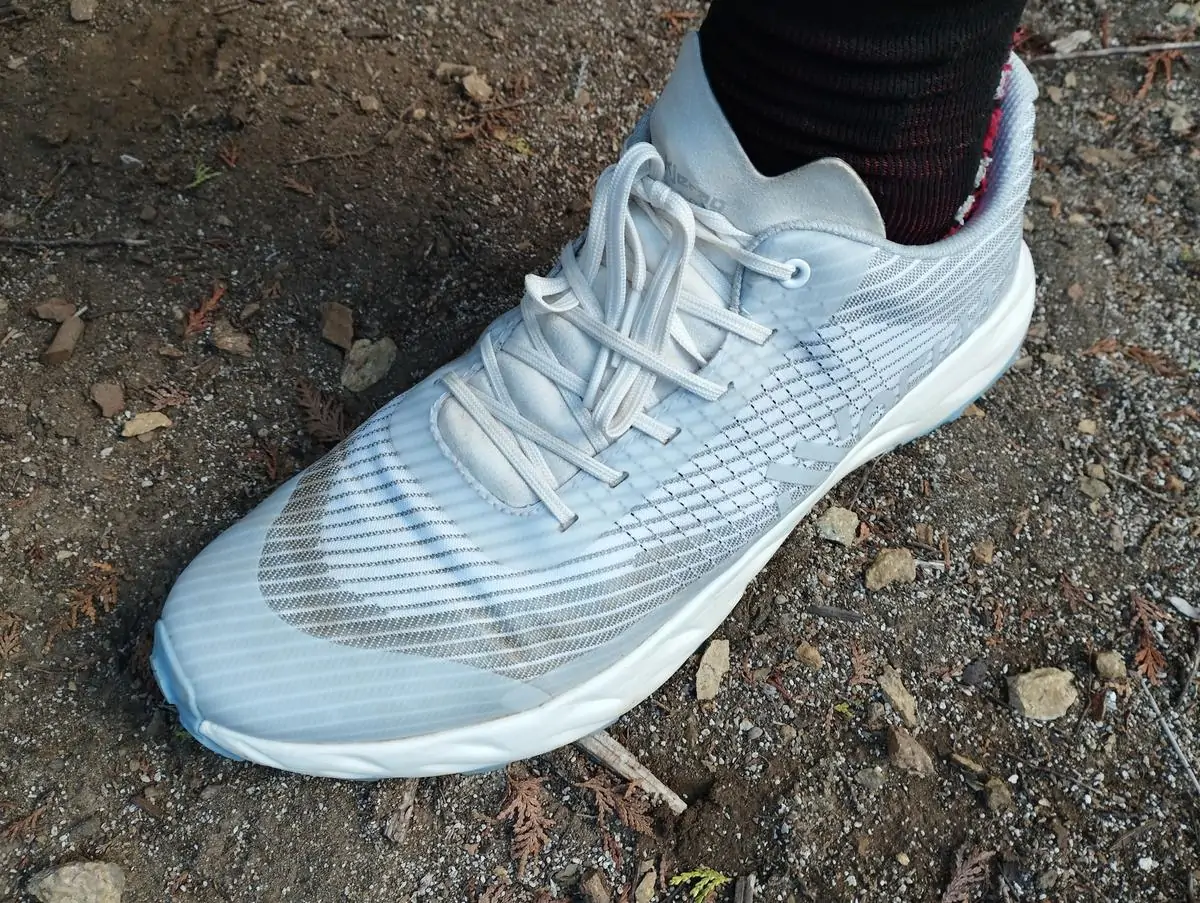
I would like to have a lace locking system in this model
General impressions
NNormal Kjerag is one of the most balanced and compromise-filled models in the premium racing shoe segment, definitely worth its price. It has been meticulously developed, clearly involving extensive and prolonged work in selecting the midsole. Kilian had no option to start with an unsuccessful model, and the developers and manufacturers of its components have clearly not disappointed. Kilian, along with his team, evidently managed to create a product no less impressive than his previous creations during his collaboration with Salomon—the S/Lab Pulsar, about which he said, "These are the best shoes I've run in." Yes, Kjerag is different—more versatile, as much as possible—classic, without a plate and a prominent "rocker," yet possessing the best technologies in its segment. These shoes don't create the illusion that you can run fast, as models with a plate do. They allow you to run as fast and far as you are prepared to. They have everything needed for this. The question is—are you ready to unlock your potential in them and realize the training work you've put in?
Technical Cross-review. NNormal Kjerag
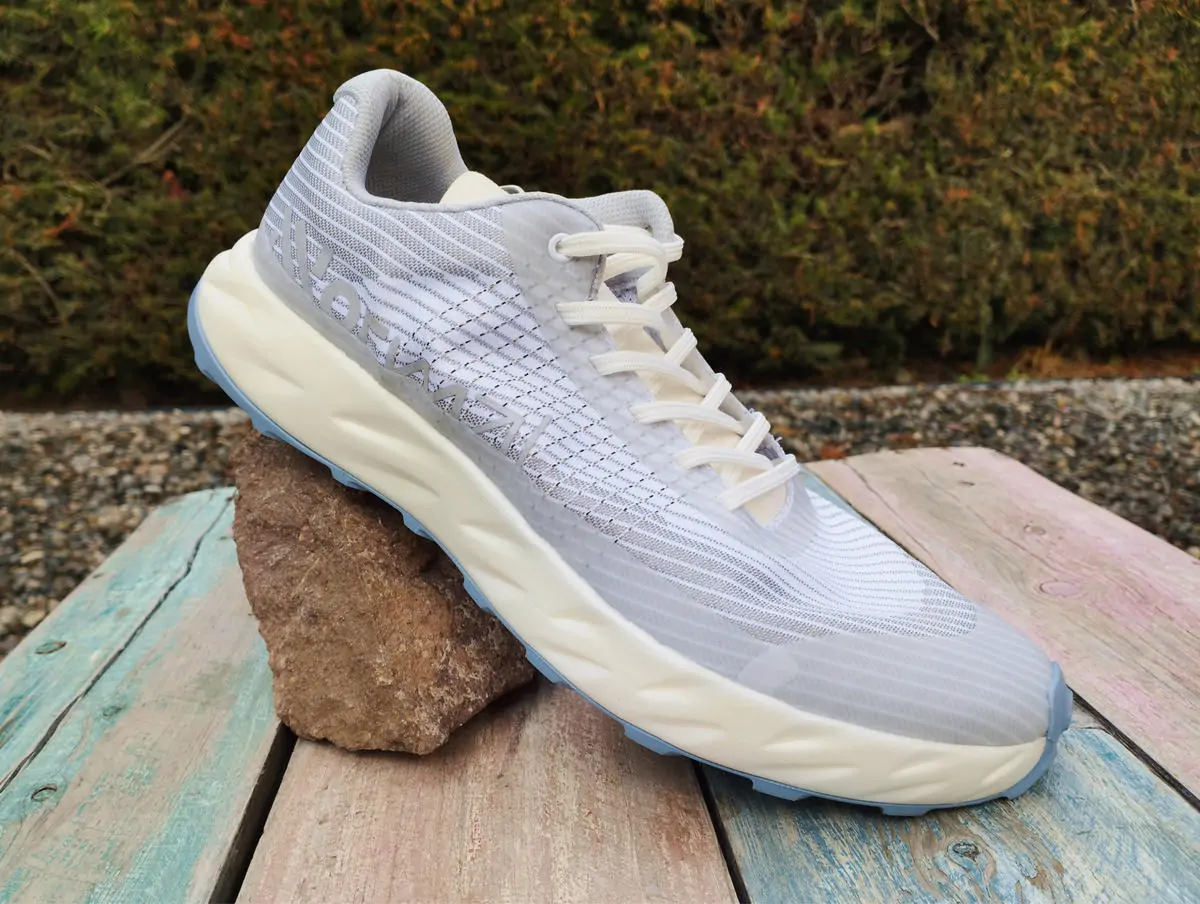
Model/Season. 2022 (continues production with presumably some changes in the last according to feedback from some runners). Tested the first-year model.
Purpose. Racing and intensive training. Shoes for running on hard surfaces and mountain trails, moderately loose terrains, rocks. Training level - Intermediate level - for short and medium distances up to 40-50 km.
Confident, well-prepared athlete - skyrunning, ultra-trails 50-80 km
Drop - 6 mm (23.5mm/17.5mm)
Weight - 200 g for US 9
Foot Strike Type - Universal, with a preference for forefoot striking. Not the most efficient heel-to-toe transition on flat surfaces, inferior to models with a plate and pronounced "rocker."
Pronation - Neutral
Last - Narrow, long last in the first two years of production. Possible changes in 2024.
Midsole NNormal Kjerag
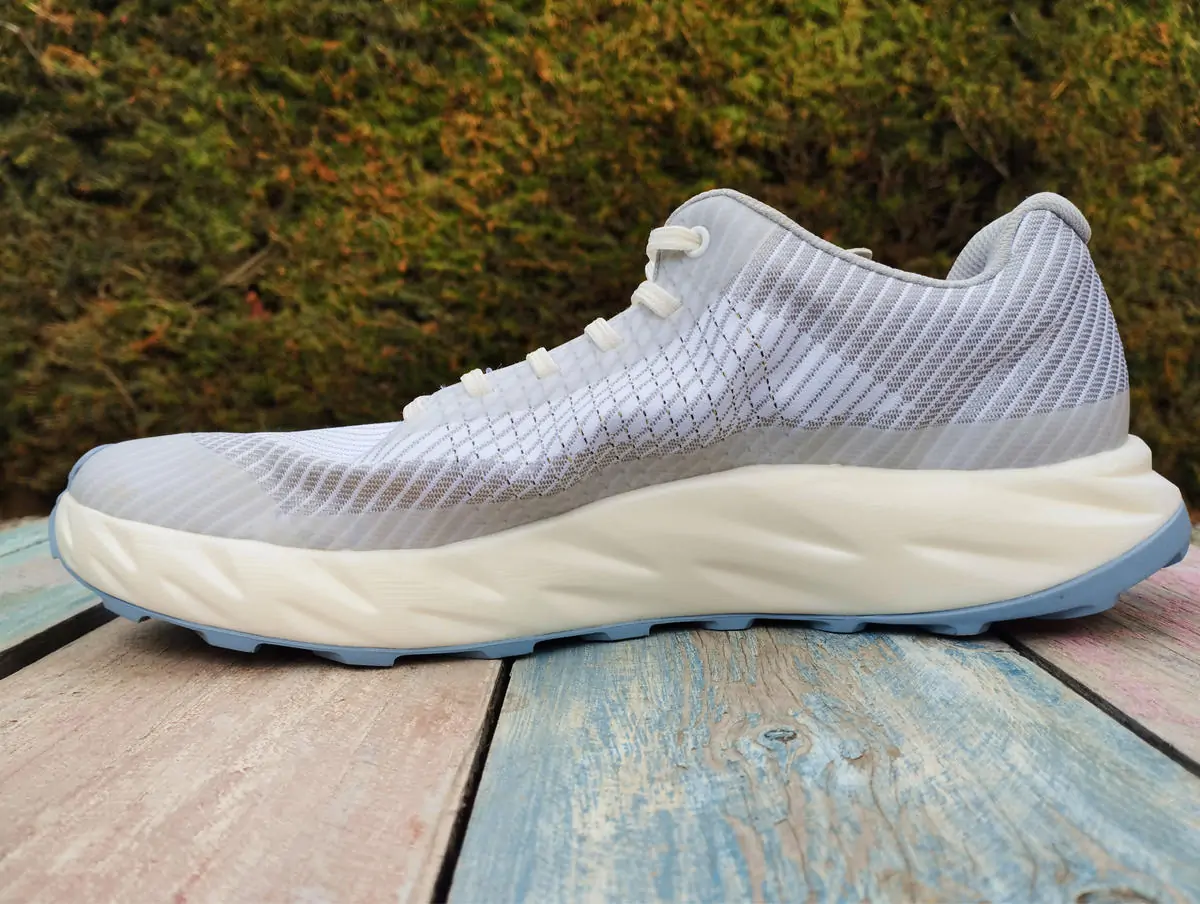
Midsole - Medium stack height midsole with EExpure foam from Fulgent Sun with the most balanced composition for high performance and adequate comfort, especially on descents.
Cushioning - 4/5. Good cushioning level for this shoe class, but not "marshmallow" or ultra-foam. They are comfortable on hard surfaces.
Arch Support - None
Stability System - None. Only quality and density of foam
Torsional Rigidity - 3/5 - average
Lateral Flexibility - 3/5 - average
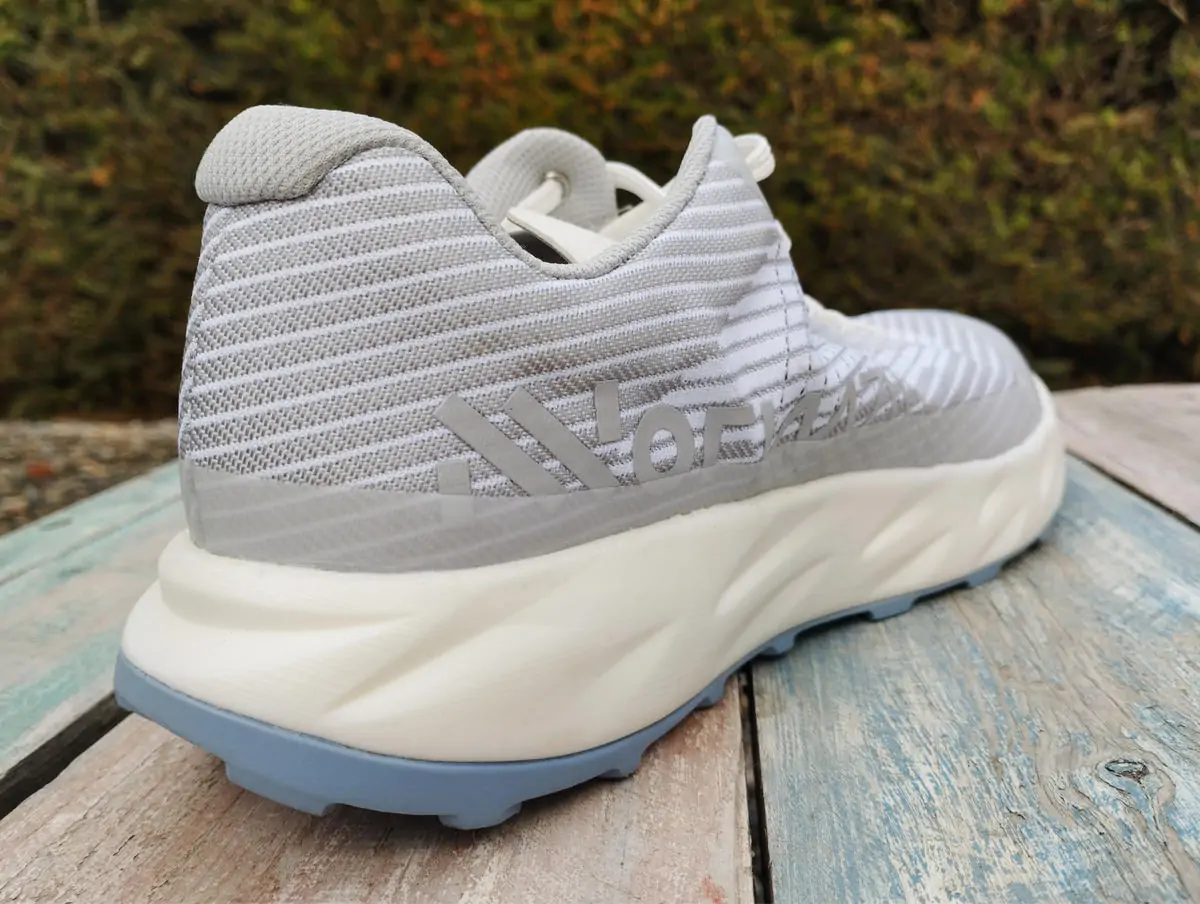
Foot Protection Level from rocks and sharp elements - 4/5. Пood protection level and feeling of safe foot placement on sharp rocks. However, they are not rigid and do not have specific protective inserts. A small bumper in the front for toe protection. When hitting obstacles, the toes are protected more by the specific last's free space.
Outsole
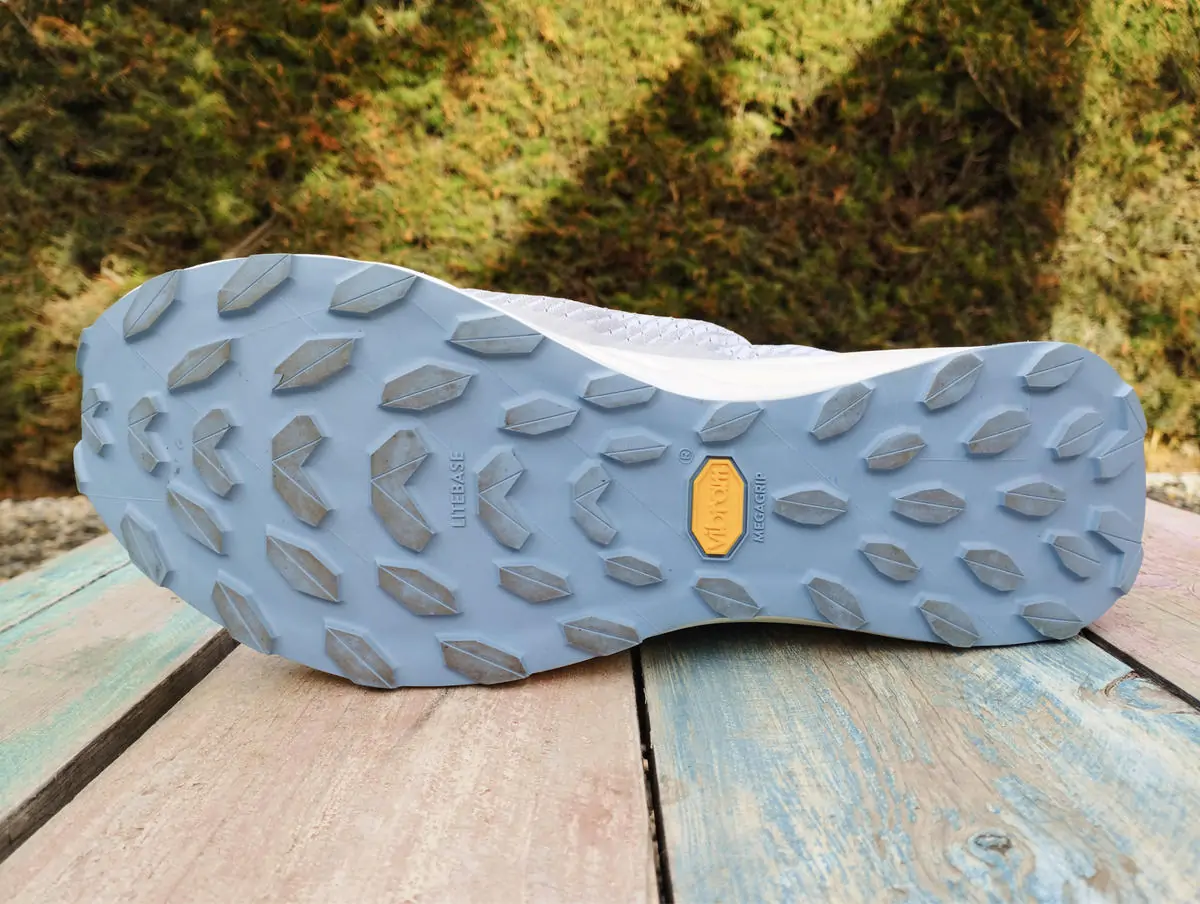
Universal tread pattern and 3.5 mm lug height - Vibram Litebase Megagrip. The outsole works well on most types of mountain and trail surfaces except extreme conditions like liquid mud, ice.
Upper
The upper is dense, relatively thin made of Matryx material, one of the most durable among modern running shoes. Slight padding in the heel area. Perimeter and lacing zone have lamination for durability and slight reinforcement for toe protection.
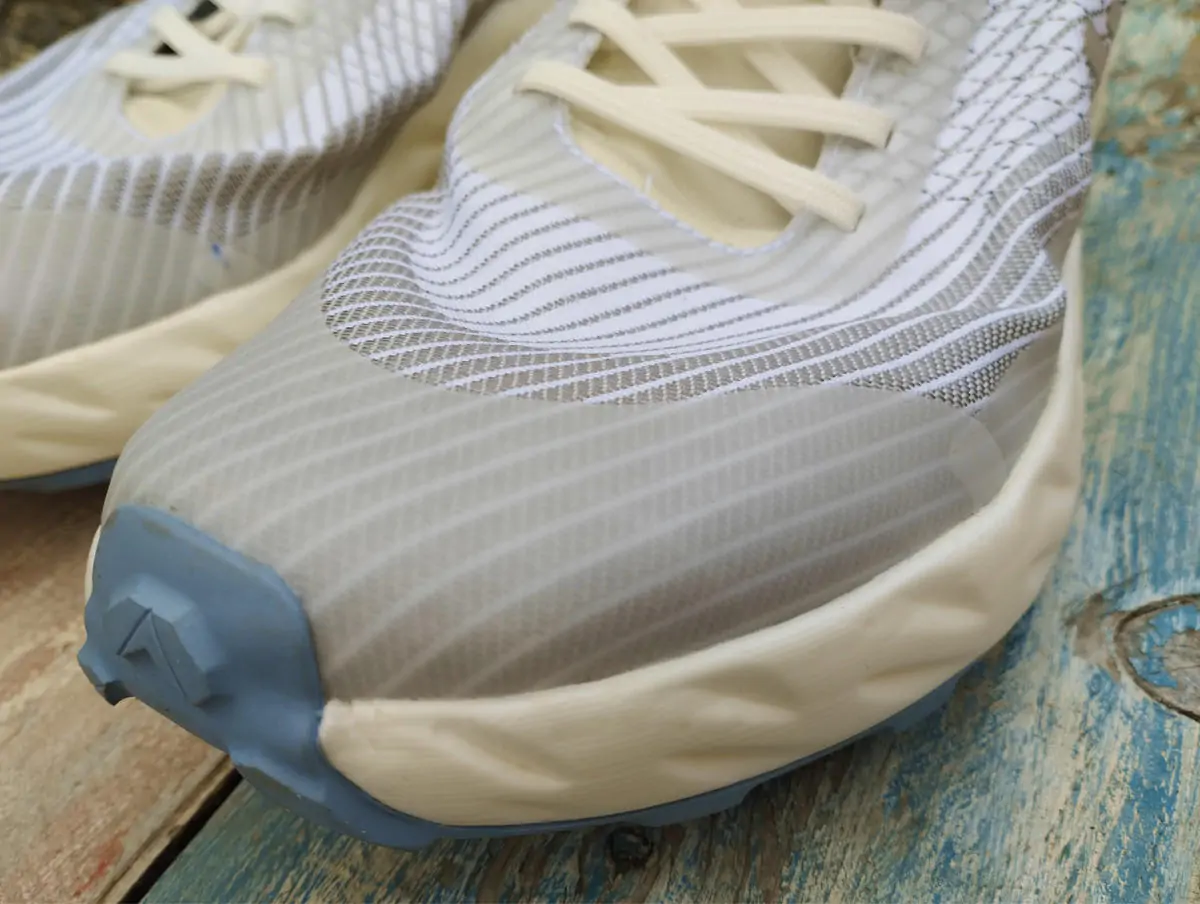
Ventilation properties - Moderate ventilation and water drainage properties. Maximum density without gaps, but quite thin. The above data indicates that these shoes have relatively low ventilation compared to many racing shoes without Matryx material. Feet are likely to sweat in hot summer weather in these shoes.
This upper mesh, besides its high durability, has one important advantage - protection from dust and sand; with such density, they won't easily get inside the shoe. In this case, we have another compromise between durability and comfort.
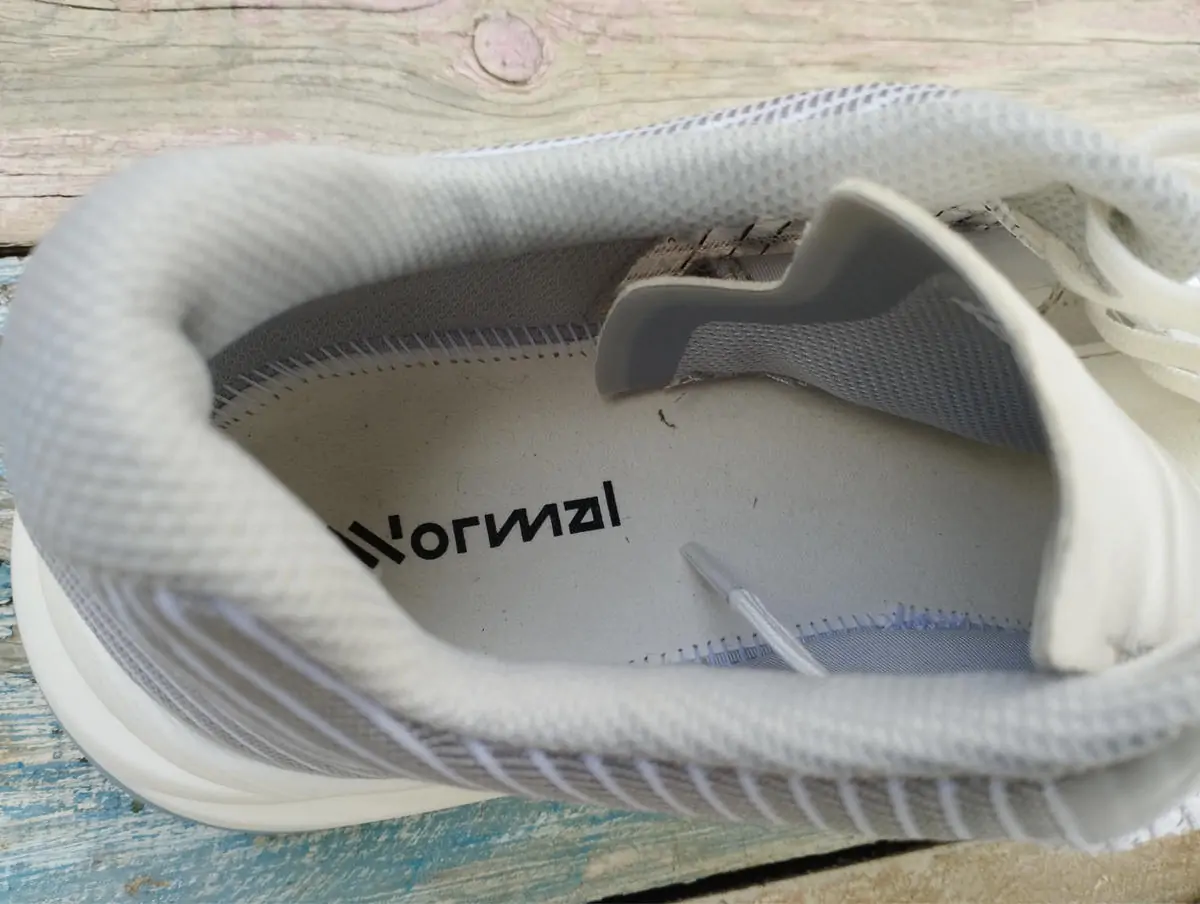
Foot Lockdown - 4/5. Foot lockdown is very good due to the tight narrow last, classic adaptable lacing under the foot, and a tongue connected to the sole. Heel cup is moderately soft, which gives some freedom in the ankle without an insole. Adding a good insole solves this issue if it's a priority for your needs.
Lacing

Soft classic lacing, slightly lacking lace pocket or system to secure tied laces. Can be solved by threading loops under the laces themselves.
Insole - Absent. Some reviewers praise this decision for a better surface feel. The downside of no insole might make your usual size feel slightly large.
About the author
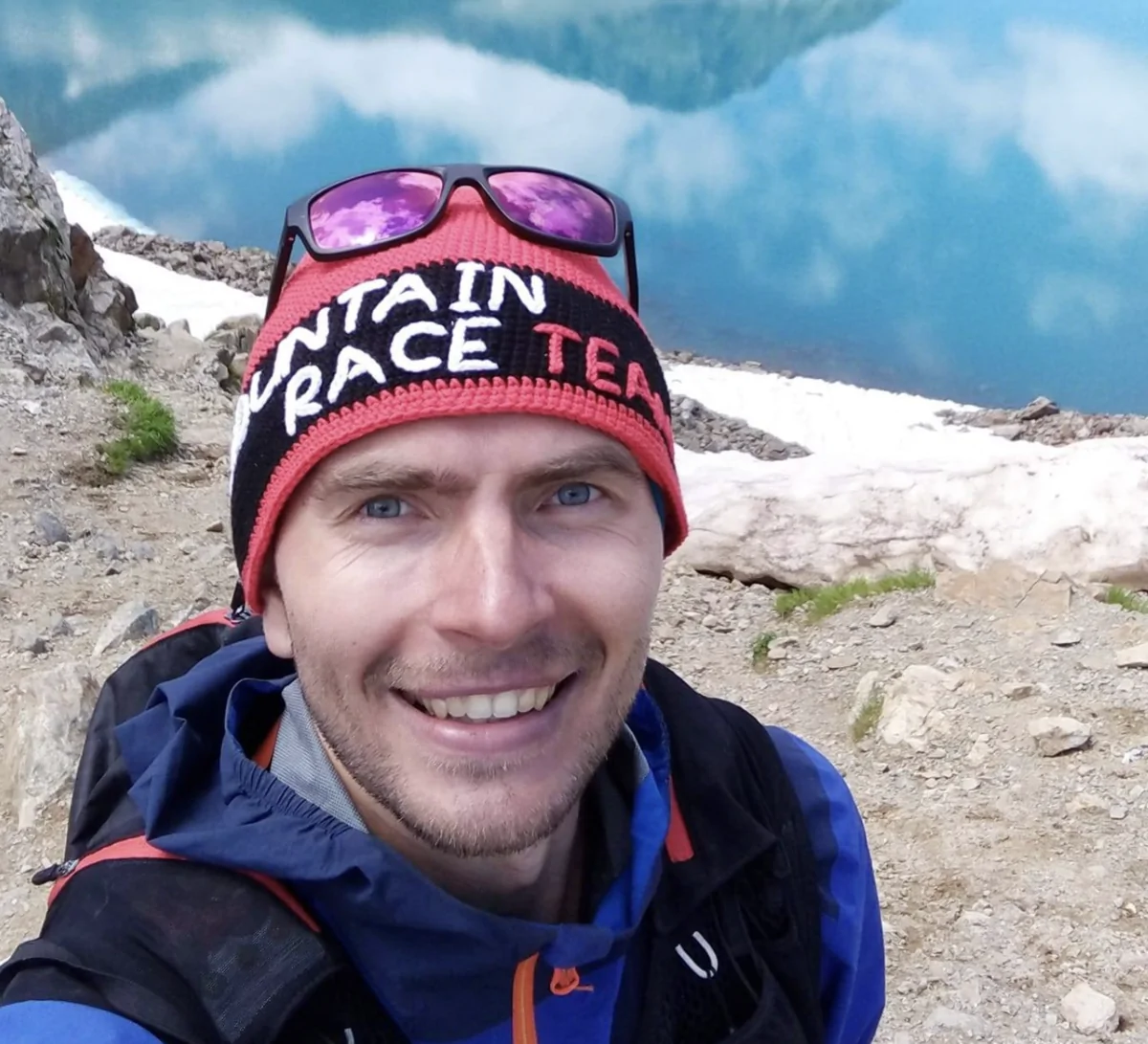 |
Why you should trust this NNormal Kjerag review. If you are reading Mountain Race Review for the first time, you should know something about our team. Aleksandr Ivakin. Chief-redactor Mountain Race PI - 750+ |
- Most of our reviews are unbiased. We are not brand ambassadors, except for Mountain Race, and if we receive shoes for testing on request, we inform our readers about it. These shoes were purchased independently and went a long way with expensive delivery to be tested in Patagonia. NNormal distribution in South America does not currently exist.
- My experience includes over 50 trails worldwide from UTMB to top speed races in the global skyrunning series, with a maximum achieved PI of 789 on mountain trails ranging from 20-30 km. This allows me to test footwear at maximum performance, which is especially relevant for top models like NNormal Kjerag.
- We have been testing gear and writing reviews since 2015 and have a wide range of experience working with various brands. We have been observing the evolution of brands and technologies for quite some time and help sellers navigate the market and consumer expectations as we work with running enthusiasts, training them in our club and organizing camps.
Актуальные новости трейлраннинга и скайраннинга, обзоры, интервью, блоги
Подпишись!






